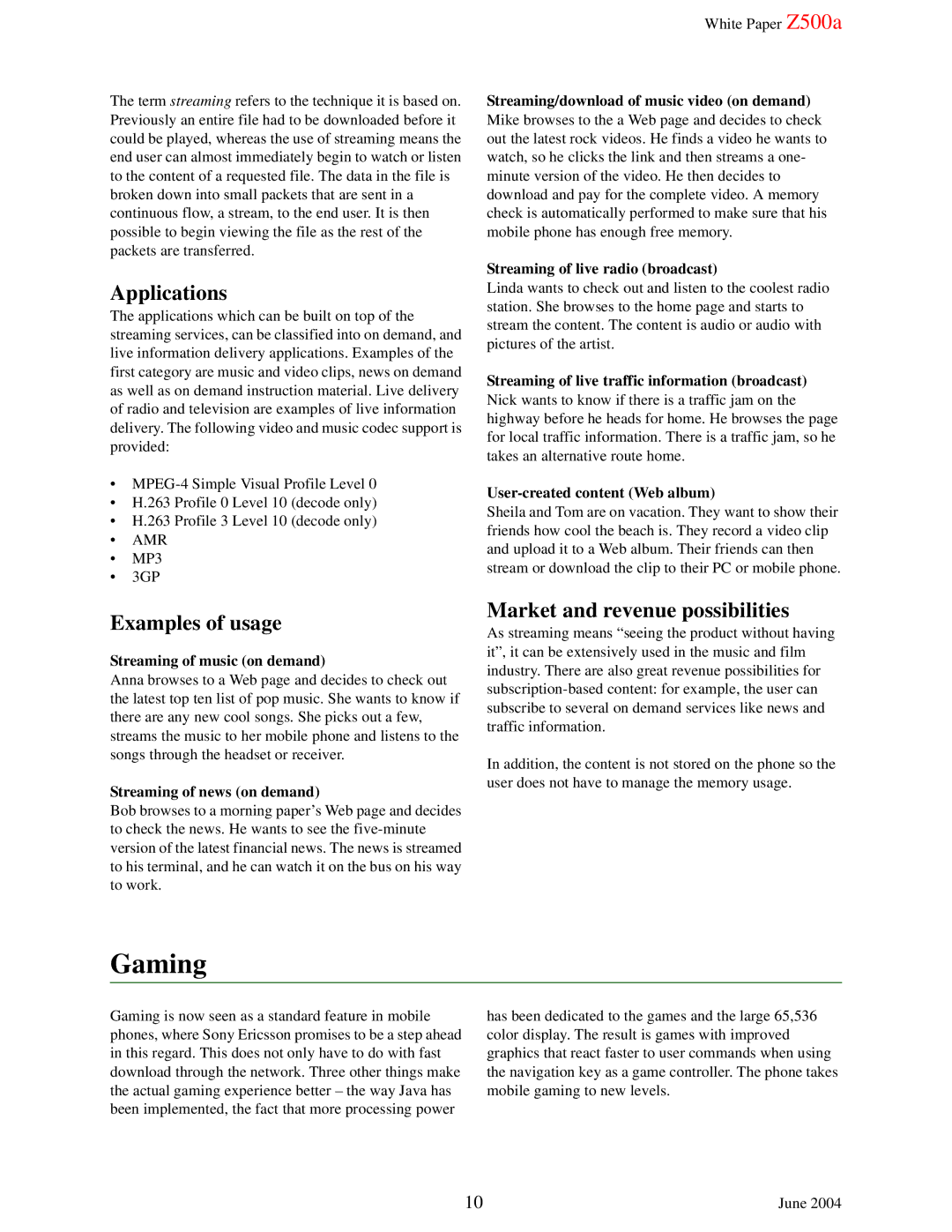The term streaming refers to the technique it is based on. Previously an entire file had to be downloaded before it could be played, whereas the use of streaming means the end user can almost immediately begin to watch or listen to the content of a requested file. The data in the file is broken down into small packets that are sent in a continuous flow, a stream, to the end user. It is then possible to begin viewing the file as the rest of the packets are transferred.
Applications
The applications which can be built on top of the streaming services, can be classified into on demand, and live information delivery applications. Examples of the first category are music and video clips, news on demand as well as on demand instruction material. Live delivery of radio and television are examples of live information delivery. The following video and music codec support is provided:
•
•H.263 Profile 0 Level 10 (decode only)
•H.263 Profile 3 Level 10 (decode only)
•AMR
•MP3
•3GP
White Paper Z500a
Streaming/download of music video (on demand)
Mike browses to the a Web page and decides to check out the latest rock videos. He finds a video he wants to watch, so he clicks the link and then streams a one- minute version of the video. He then decides to download and pay for the complete video. A memory check is automatically performed to make sure that his mobile phone has enough free memory.
Streaming of live radio (broadcast)
Linda wants to check out and listen to the coolest radio station. She browses to the home page and starts to stream the content. The content is audio or audio with pictures of the artist.
Streaming of live traffic information (broadcast)
Nick wants to know if there is a traffic jam on the highway before he heads for home. He browses the page for local traffic information. There is a traffic jam, so he takes an alternative route home.
User-created content (Web album)
Sheila and Tom are on vacation. They want to show their friends how cool the beach is. They record a video clip and upload it to a Web album. Their friends can then stream or download the clip to their PC or mobile phone.
Examples of usage
Streaming of music (on demand)
Anna browses to a Web page and decides to check out the latest top ten list of pop music. She wants to know if there are any new cool songs. She picks out a few, streams the music to her mobile phone and listens to the songs through the headset or receiver.
Streaming of news (on demand)
Bob browses to a morning paper’s Web page and decides to check the news. He wants to see the
Market and revenue possibilities
As streaming means “seeing the product without having it”, it can be extensively used in the music and film industry. There are also great revenue possibilities for
In addition, the content is not stored on the phone so the user does not have to manage the memory usage.
Gaming
Gaming is now seen as a standard feature in mobile phones, where Sony Ericsson promises to be a step ahead in this regard. This does not only have to do with fast download through the network. Three other things make the actual gaming experience better – the way Java has been implemented, the fact that more processing power
has been dedicated to the games and the large 65,536 color display. The result is games with improved graphics that react faster to user commands when using the navigation key as a game controller. The phone takes mobile gaming to new levels.
10 | June 2004 |
